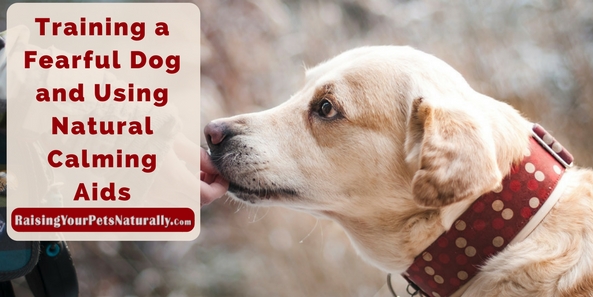Google Adsense—>

How To Train a Fearful Dog Naturally
Getting a Scared Dog To Trust You

It goes a little something like this. “I tried x and my dog still does y.” My response: “How are the training exercises I suggested going?” Client’s reply: “Well, I haven’t really done them.” Sigh. Now, I love my clients and most of them are so good at practicing their recommended training and management exercises. But, like so many of us, sometimes they just want a quick fix. We are looking for a product or solution that we can give our pet and not have to do any additional work. Unfortunately, in most dog or cat behavior cases, this is not possible.
Watch my video below and don’t forget to subscribe to my YouTube channel.
As a professional pet specialist, I realize a lot of background information and legwork needs to be done before I even take on a case. When I’m working with a pet guardian, the first step is for the human clients to fill out a behavior and medical history form on each of their pets. And this pet history form is not short; it’s over 100 questions. After a client returns their pet behavior profile, I review the pet’s history, eating routine, medical history, and daily activities, then the client and I follow up with a 2-3 hour consultation. During the initial consultation, we talk about their pet’s behavior, the client’s goals, management tools, and layout a detailed behavior modification program. Then we discuss what I call “add-ons.”
Add-ons are just as they sound, an addition to something else. In this case, they’re used in addition to an active behavior modification program, not instead of. My typical dog or cat behavioral training add-ons are things like food therapy, specific exercises, homeopathic remedies, flower essences, vitamins, calming music, anxiety wraps, massage, acupuncture, acupressure, or essential oils. My recommendations are very specific to each case; there isn’t a one-size-fits-all. These pet calming aids are considered natural, with a low risk of side effects. That, however, doesn’t mean a client shouldn’t speak with their veterinarian, particularly if we are considering things like herbs, vitamins, or essential oils. Sometimes, a pet may also need pharmaceutical intervention.
Using additional calming aids like the ones mentioned above can help a dog or cat relax and feel more comfortable, providing a pet parent the chance to implement a behavior modification program. If a pet is too stressed or reactive to be able to concentrate, then a training program can be hard to start. And sometimes a pet is so stressed all day long that it is unhealthy and even inhumane to allow him to feel that way. Natural calming remedies can provide a window of opportunity to help change a pet’s behavior. But, they are unlikely to work alone over the longer term. This is why for reliable success, a good training protocol is needed, along with calming aids.
Want more dog training tips? Check out my articles Scared Dog and Dogs Scared of Thunder. Private and personalized training sessions are always available.
Do you have an anxious pet? Tell me in the comments.
Are you looking for even more ways to stay up to date with Raising Your Pets Naturally? Sign up for the newsletter for more tips and promotions. Don’t forget to be social and Like, Follow and Subscribe. Comments below are always welcome.
Facebook Twitter Pinterest Instagram YouTube
 |






I have a very excitable pug who needs to stay calm because of breathing issues. I also have a pug who has separation anxiety. Any suggestions? I’ve been looking into essential oils and diffusers. They are seen my Dr Judy Morgan and eat AllProvide.
Hi, Michele. As this post suggests, it’s not about just adding calming aids, but providing appropriate behavior modification to go along with the treatment. I sent you an email.
I inherited a nine year old male poodle when my brother passed away almost four years ago. He has been a very loving pet, but he has changed recently. I am a 74 yr old woman, widowed two years ago and a year ago I moved in with my granddaughter, two boys, and a two year old husky. My poodle gets along with everyone, but recently he has been barking very aggressively at the husky when he comes in my room. He even tried to attack him. I have tried everything I know and have been bitten three times by him. My granddaughter thinks we should put him asleep. I am afraid he’ll hurt the boys if they come in with their dog. What’s your opinion?
Hi, Bonnie. Unfortunately, I cannot give an opinion on such a case without having a full history and a couple our session. I will send you an email.